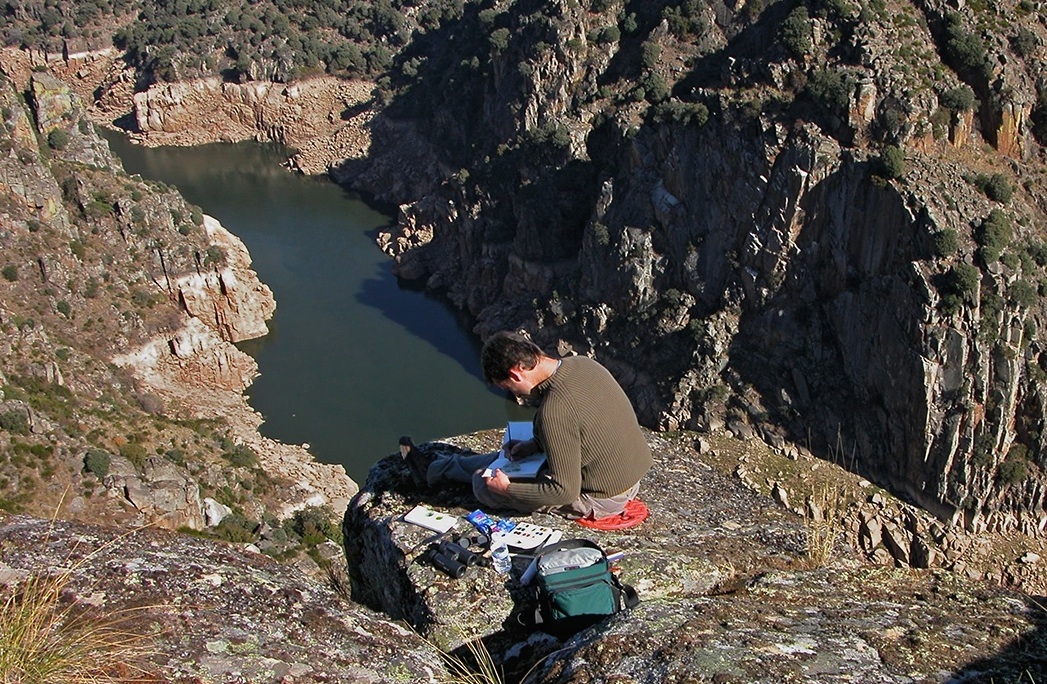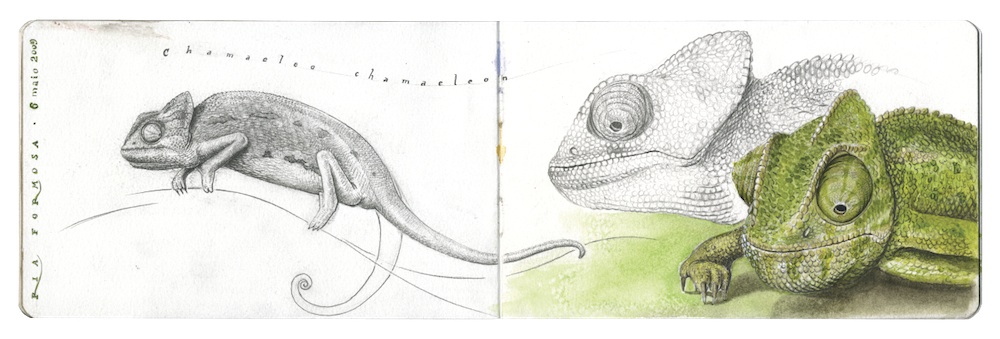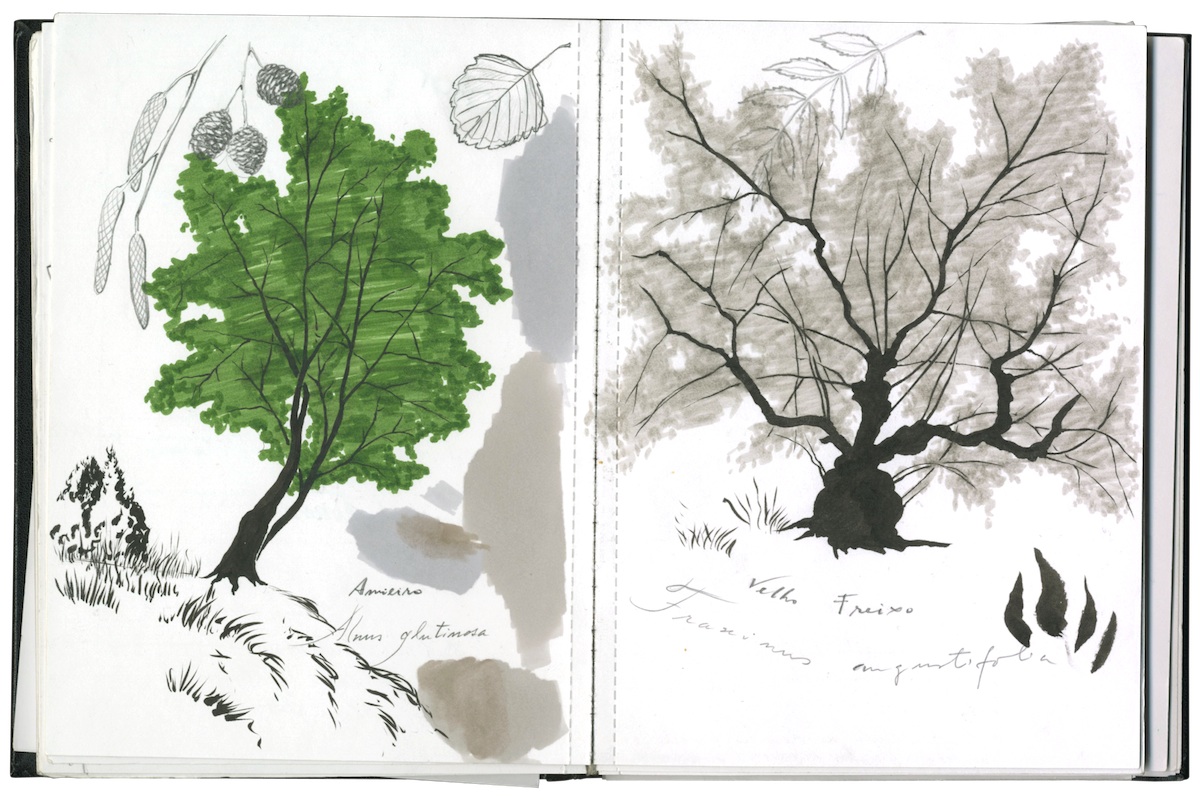Nature Portuguese sketcher Marco Nunes Correia helps you find the best nature objects for you to start drawing the natural world at your door.
The first thing you should know is that every time of year is an excellent time to draw Nature. We can even draw in the rain! But springtime is the most pleasant one to be outside with our sketchbooks and paintings, surrounded by the gentle warmth of the sun. And there’s a lot going on in the natural world. Spring is a special busy time for flowers, bees, butterflies, birds, just to name a few. And what a shame it would be if we didn’t draw it!
So, this time of year there are some challenges and tips waiting for the artist within us. Such as these:
Leaves: we can start by drawing the leaves of a tree, just to break the ice with paper and pencil. They are simpler to draw since they are flat. When we draw them looking from above or from bellow, we mustn’t forget that the textures are not the same. We can draw one side and then the other to compare the differences.
Here’s a tip to help us draw the structure of the leaf in front of us: it’s best if we forget all about what a leaf is and start by observing it very carefully and just draw what we’re seeing. We can look for the forms in it: circles, ovals, triangles, trapezes or rectangles. These forms will help us to achieve a more realistic drawing. And it’s very important that at all times we pay attention to the proportions because without them our drawing will look awkward.
We should try to represent the leaf the best way we can but we shouldn’t worry too much. We don’t have to draw every single curve we see. It would be a tall order! And that’s ok if we don’t like our first drawings that much. Drawing is an art that requires practice.
Trees: We can also start by drawing the fruits, branches or the trunk of a tree we like. To the more ambitious ones, drawing the entire tree is a good challenge. In this case, the texture of the foliage can be difficult to draw. So, here’s a tip for you. Before going out to draw we can take some photographs of the tree we will be drawing, such as chestnuts and oaks, or of the wood we want to represent. Then we observe and study the tree at different distances. After that, we can use some tracing paper to draw the tree, trying to understand the texture and the details we will be adding. This way we will be creating lines, spots or a wavy effect to represent the concentration of the leaves.
Flowers: First we should choose a flower that we like or that is simple to understand. It can be in a garden, meadow or in our balcony. An interesting challenge is to observe that particular flower several times to document its evolution along the season. We can draw the button, the petals and the fruit, witnessing the entire circle of life. And to make things more “scientific” we can write down the date and the location of our drawings.
Here’s a useful tip when drawing flowers. Draw a big one! If we choose a small flower, we won’t be able to draw all it’s amazing details. Another import thing to keep in mind: observe the flower at different angles and understand the changes of perspective: front, side, above and bellow. And pay attention to the form of the petals and stamen.
But of course there are many, many more things to draw in spring. The little twigs with its curly leaves and flowers, the lovely snails or insects are just a few. It´s best if you choose something you can feel empathy to because it’ll be easier to develop your observation skills. Try not to pic something too simple or too complicated. Always something exciting.







